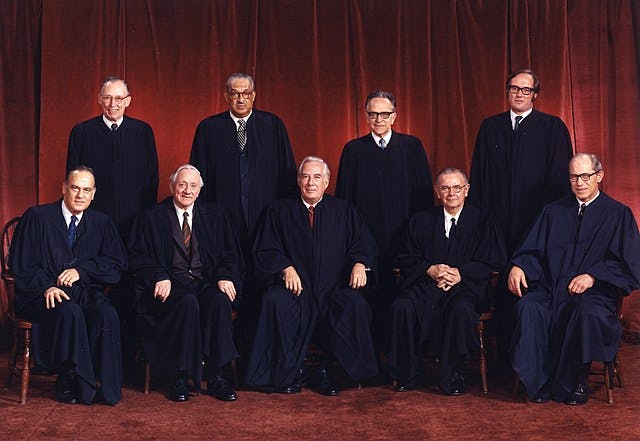Was It All One Big Lie?
Justice Thomas marks how our country is awakening to an infuriating possibility — that there never was a right to an abortion in the Constitution itself, an error that can be traced to a fiction known as ‘substantive due process.’

In one sense the level of anger that has been erupting in America in respect of the end of Roe v. Wade strikes us as out of proportion. The Supreme Court was never going to — and did not — outlaw abortion. In the immediate sense what the Court has done is acknowledge its own failure and change the branch of government that is going to decide this question to the legislatures of the federal and state governments from the judiciary.
In another sense, though, our country is awakening to an infuriating possibility — that it was all one big lie. That is the lie that there was a right to an abortion in the Constitution itself. That fib was based on another lie, that there was a right to privacy in the Constitution. It was enabled by a fiction known as “substantive due process,” whereby all sorts of questions have been taken from our legislatures and given to our judges.
This was marked brilliantly in Dobbs v. Jackson Women’s Health Organization by the court’s senior-most sage, Justice Clarence Thomas. In a concurring opinion, he calls the concept of “substantive due process” a “legal fiction” and an “oxymoron” lacking “any basis in the Constitution.” The term, he writes, is a kind of corruption of the idea of due process, which is enshrined in the Constitution as an assurance of fair and equal treatment in legal proceedings.
The Constitution’s Due Process Clause, Justice Thomas explains, requires “customary procedures” be followed when life, liberty, or property are at stake. Due process “does not secure any substantive rights.” Claiming to find rights hidden within due process, he explains, is a legal gymnastics leading to rulings like Roe. “Substantive due process,” he writes, “exalts judges at the expense of the People from whom they derive their authority.”
When the Supreme Court justifies its decisions on the basis of “substantive due process,” Justice Thomas writes, it “divines new rights in line with ‘its own, extraconstitutional value preferences’ and nullifies state laws that do not align with the judicially created guarantees.” He decries substantive due process as “the core inspiration for many of the Court’s constitutionally unmoored policy judgments.”
Among these Justice Thomas places Roe, in which “the Court divined a right to abortion” on the grounds that “the Fourteenth Amendment’s concept of personal liberty” featured a privacy right “broad enough to encompass a woman’s decision whether or not to terminate her pregnancy.” Except it’s not in the Constitution. Justice Thomas notes that a “right to abortion is ultimately a policy goal in desperate search of a constitutional justification.”
The same rationale applies, Justice Thomas reckons, in other cases where substantive due process was cited as the justification for the creation of new rights. He points to rulings that established, in Griswold v. Connecticut, a right under the Constitution to purchase the means of birth control, or, in Lawrence v. Texas, the right to engage in “sexual practices common to a homosexual lifestyle,” or, in Obergefell v. Hodges, a right to same-sex marriage.
In each of these cases the Supreme Court took it upon itself to intervene in a policy question that was in the process of being sorted out in the legislatures of the states. In Griswold, a 1965 case, the court took aim at a 19th-century Connecticut law banning contraception. In the years prior to Griswold, many states had already dropped their birth control bans. Connecticut wasn’t even enforcing its own law. Yet the court opted to step in.
Roe itself took Griswold for inspiration. Like Griswold, Roe took an issue that was in the process of being hashed out in the nation’s legislatures — nearly 20 of which had legalized some form of abortion by 1972 — and imposed a one-size-fits-all judicial decree on all 50 states. Yet by attempting to resolve the question of abortion, historian James Robenalt writes, the high court in 1973 instead “generated a vast antiabortion movement.”
Mr. Robenalt observes that a less sweeping ruling by the Supreme Court in 1973 “would have allowed states to freely establish their own abortion limits, a process that was already underway in 1972.” No wonder they’re angry, on both sides. Our own hope is that as America returns to the legislative process — call it substantive democracy — it will be possible to leach the anger that has convulsed our country for 50 years and find again the sunlit uplands of liberty.

